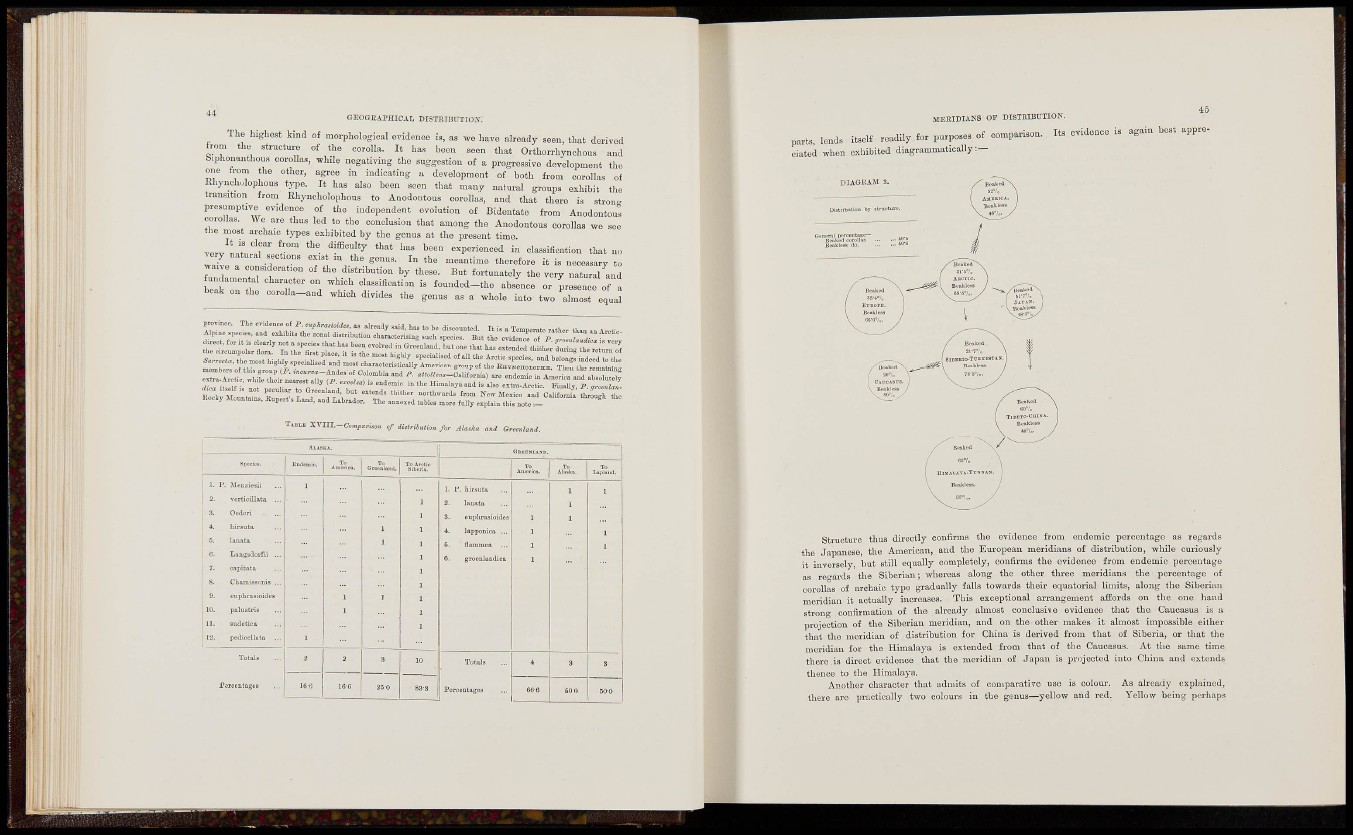
GEOGRAPHICAL DISTEIB•C^TIO^\
The highest kind of morphological eTidenoe is, as we have already seen, that derived
f r om the structure of the corolla. It has been seen that Orthorrhynchous aud
S.phonauthous corollas, while negativing the suggestion of a progressive development the
one from the other, agree in indicating a development of both from corollas of
Khynchulophous typo. It has also been seen that many natural groups exhibit the
transition from Rhjmcholophous to Anodontous corollas, and that there is strong
presumplive evidence of the independent evolution of Bidontate from Anodontous
corollas. We aro thus led to the conclusion that among the Anodontous corollas we see
the most archaic types exhibited by the genus at the present time
v e r y ' L ' f a r t l T -P ™ - « ^ - classification that no
very natural sections east in the geuns. In the meantime therefore it is necessary to
waive a consideration of the distribution by these. But fortunately the veiy n Z a i and
undamental character on wMch classification is founded-the absence or p ^ e : : of a
beak on the corolla-and which divides the genns as a whole into two almost e,ual
Th, of P . W»i.,, . . „i d , ta, ^ di^ounW. Il i. . T ~ . l , „«.„
TABLE SVNI.-C<,;»P<IRMN C distribution for Alaska and Qreenland.
V. Menziesil
Tertieillata
Oederi
lanata
Langsdorfii
capitata
enphrasioides
palustris
sudetica
pecUcellata .,
TotaJs
1. I liirsuta ...
2. knata ...
3. euplu-asioides
4. lapponica ...
5. flaomea ...
6. grocnlundicn
MEEIDIAN3 OF DISTRIBUTION,
parts, lends itself readily for purposes of comparison. Its evidence is again best appreciated
when exhibited diagrammatically:—
Structure thus directly confirms the evidence from endemic percentage as regards
the Japanese, the American, and the European meridians of distribution, while curiously
it inversely, but still equally completely, confirms the evidence from endemic percentage
as regards the Siberiun; whereas along the other three meridians the percentage of
corollas of archaic type gradually falls towards their equatorial limits, along the Siberiaji
meridian it actually increases. This exceptional arrangement aSords on the one hand
strong confirmation of the already almost conclusive evidence that the Caucasus is a
projection of the Siberian meridian, and on the other makes it almost impossible either
that the meridian of distribution for China is derived from that of Siberia, or that the
meridian for the Himalaya is extended from that of the Caucasus. At the same time
there is direct evidence that the meridian of Japan is projected into China aud extends
thence to the Himalaya.
Another character that admits of coniparati"e use is colour. As already explained,
there are practically two colours in the genus—yellow and red. Yellow being perhaps